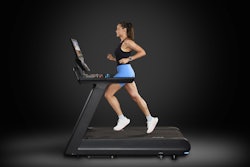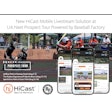Source: National Athletic Trainers' Association
DALLAS, December 6, 2016 – The National Athletic Trainers’ Association (NATA) published today its new position statement, “Preventing and Managing Sport-Related Dental and Oral Injuries.” Created by the NATA Research & Education Foundation, the statement appears online in the Journal of Athletic Training, NATA’s scientific publication:https://natajournals.org/doi/pdf/10.4085/1062-6050-51.8.01
As the number of high school and collegiate athletes in competitive sports, now estimated at 7.2 million, continues to grow, so does the rate of injuries, including those that are dental and oral-related. According to the statement authors, mouthguards are mandated in only a few sports by both the NCAA and the National Federation of State High School Associations. Yet, researchers have estimated that in sports such as baseball, basketball and soccer, which do not mandate mouthguards, orofacial injury rates ranged from approximately 3 percent to 38 percent of all sport-related injuries. Research further indicates that sport participants who did not wear mouthguards were 1.6 to 1.9 times more likely to sustain an orofacial injury compared to those who wore them.
“It’s also important to recognize the often overlooked financial burden of oral and dental injuries,” says lead author Trenton E. Gould, PhD, ATC, associate dean, College of Health, and professor, School of Kinesiology, at the University of Southern Mississippi. “Treating a dental trauma, such as an entire tooth being knocked out, can cost upwards of $10,000. Effective management of sport-related dental injuries is critical to the long-term financial, physical and emotional health of anyone who has experienced dental trauma.”
The position statement offers guidelines on how to prevent and manage sport-related dental and oral injuries. Here are the highlights:
Position statement recommendations
Planning considerations:
- All athletic trainers and other health care professionals responsible for athlete care should be familiar with the NATA position statement on emergency planning in athletics.
- Clinicians responsible for the dental care of athletes should identify an appropriate oral health care specialist (preferably with additional training in sports dentistry) for direct referral.
- Health care professionals providing onsite care to athletes should carry a dental trauma pack with their sideline sports medicine kit. A complete list is included in the new position statement. Contents may be modified based on the needs of a specific sport or team.
Education:
- Clinicians responsible for emergency dental care of athletes should have adequate knowledge of the structure and function of the teeth and jaw. They should also be able to recognize the signs, symptoms and classifications of acute dental injury.
- Given the overlap between sport-related dental and concussion mechanisms, athletic trainers and other health care professionals should perform a thorough concussion evaluation (refer to the NATA position statement on the management of sport concussion) in conjunction with the orofacial examination.
- Health care professionals, athletes, parents and coaches should be educated on the importance of wearing a properly fitted mouthguard and be familiar with the classification systems used to characterize mouthguards. They should also know the international, national and state governing body rules, regulations and requirements related to mouthguard use associated with various sports.
Injury classification:
Dental injuries can affect different parts of the tooth. An athletic trainer or other health care professional will need to properly assess the injury, provide acute management and make return-to-play or referral decisions. Broad injury categories include:
- tooth fractures
- root fractures
- tooth displacement injuries
Mouthguard effectiveness:
- Mouthguards are consistently effective at protecting against orofacial injuries. Athletic trainers, coaches and parents should encourage athletes to wear properly fitted mouthguards when participating in sports activities associated with increased orofacial injury risk.
- Mouthguards are not recommended for preventing mild traumatic brain injury or sport-related concussion, as no high-quality scientific evidence currently supports using any type of mouthguard or mouthguard material for this purpose.
- Properly fitted mouthguards can be used by athletes in both aerobic and anaerobic sports. Use of these devices has no negative effect on breathing or strength. Likewise, mouthguards should not be recommended to athletes to improve performance, as no high-quality evidence supports this claim.
Mouthguard material, fabrication and care considerations
- While working within the scope of their respective state practice acts, clinicians responsible for fabricating and fitting athletic mouthguards should strive to meet suggested fabrication (i.e., fit) recommendations. In younger athletes, whose mouths are continually developing, the mouthguard should be routinely inspected for fit and retention to accommodate tooth eruption, growth and changing contact between upper and lower teeth.
- Athletes should be instructed to wash the mouthguard with a mild antimicrobial soap and rinse it thoroughly in lukewarm water both before and after use. The mouthguard should then be stored in a clean, rigid, ventilated plastic container.
- Mouthguards should not be exposed to prolonged direct sunlight or sources of heat, as deformation may occur and reduce its protective capabilities. Athletes should examine the mouthguard daily for fit and for any damage (e.g., tear in material or loss of resiliency). The mouthguard should be replaced if it is loose or damaged.
“Athletic trainers, as well as other health care professionals, play a pivotal role in the effective management of oral and dental injuries, says Gould. “This is critical to the injured athlete’s long-term oral health outcome and overall physical and mental well-being.”
For more information please visit: www.nata.org.
About NATA: National Athletic Trainers’ Association (NATA) – Health Care for Life & Sport
Athletic trainers are health care professionals who specialize in the prevention, diagnosis, treatment and rehabilitation of injuries and sport-related illnesses. They prevent and treat chronic musculoskeletal injuries from sports, physical and occupational activity, and provide immediate care for acute injuries. Athletic trainers offer a continuum of care that is unparalleled in health care. The National Athletic Trainers' Association represents and supports 44,000 members of the athletic training profession. Visit www.nata.org.































